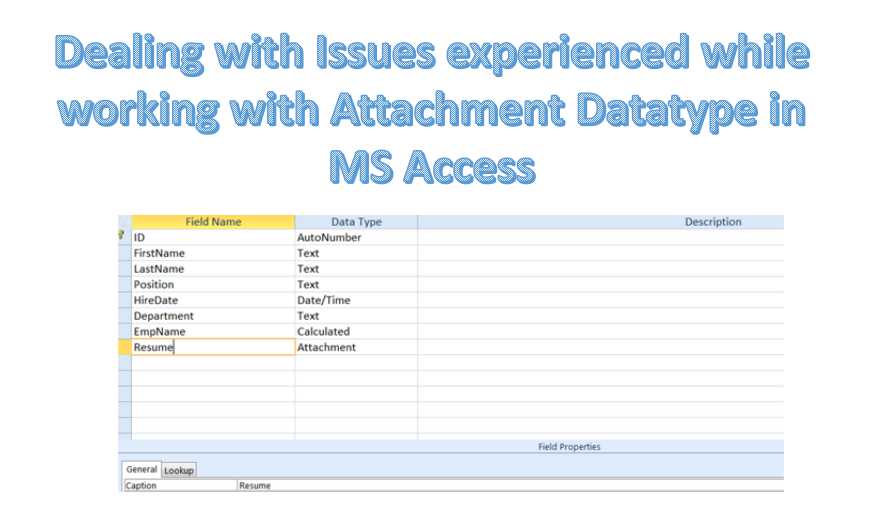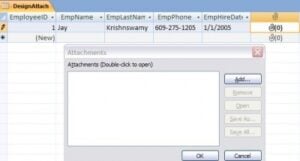In this article we discuss about issues related to attachment datatype in MS Access and how to deal with them.
When working with applications like MS Access, which has been designed by a few of the brightest brains on the planet, we can rest assured that it would constantly get upgraded with the latest of features. When you are making use of an Access database, it is common for you to feel that there is a need to add greater information in a given field. Information that is different from the mentioned datatype of the field. In this kind of a situation, when you are bounded by the datatype of the field, you can do away with this restriction with the help of Attachment Datatype in MS Access.
Attachment Datatype in MS Access
 This is a special kind of datatype introduced in MS Access that allows users to add an attachment to the given field in addition to some textual or numerical information. So now if you wish to create fields wherein you can store information that is a combination of text as well as attachment, then this is the datatype you need to make use of. However, this datatype also comes with its own conditions; given below are a few key points that you should keep in mind when making use of Attachment datatype.
This is a special kind of datatype introduced in MS Access that allows users to add an attachment to the given field in addition to some textual or numerical information. So now if you wish to create fields wherein you can store information that is a combination of text as well as attachment, then this is the datatype you need to make use of. However, this datatype also comes with its own conditions; given below are a few key points that you should keep in mind when making use of Attachment datatype.
- The size of the given piece of attached data should not be more than 256 MB.
- You can add, delete, or edit the attached items only with Attachments dialog box.
- A new item ‘The Attachment control’ will now begin appearing in the Forms and Reports toolbox. This can be used at the time of designing.
- You will be able to edit the existing attachment if the program that was used while creating the attachment is still present on a local computer.
- All the uncompressed files in the attachments will be compressed before being stored in the database.
- Attachment can be present at any location over the network or the disk drive.
- For working programmatically with the attachments, you will have to make use of the VBA code.
Although the Attachment datatype can be of great help if you need to store more than just the basic information in any given field, it also has its own share of shortcomings. Apart from all its advantages and plus points, there are also several issues that you might have to deal with when using the attachment data type.
Issues arising when working with Attachment datatype.
Before you choose to make use of Attachment datatype in your MS Access database, make sure you are aware of its limitations.
- Attachment data type often leads to the bloating of your Access database, thus making it hard to manage.
- Attachment data type is often responsible for negatively impacting your performance and cause Access corruption
- For interacting and extracting attachments that are present in the database, you will have to make use of codes. So make sure you have access to them beforehand.
One of the commonly recommended alternatives of the attachment datatype is making use of the tried and tested formula of storing the file path along with the file name, in addition to the extension.
Author Introduction:
Vivian Stevens is a data recovery expert in DataNumen, Inc., which is the world leader in data recovery technologies, including SQL Server repair and excel recovery software products. For more information visit www.datanumen.com
